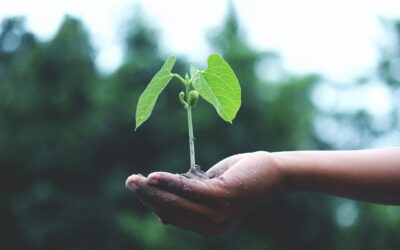This post was originally published on Sustainability Matters

Closing major assets like power stations or mines can profoundly impact local communities, sometimes leading to job losses, a decline in local services, and a drastic reduction in population. In today’s world, there’s a clear expectation that mining and utility companies navigate these transitions thoughtfully. This requires developing a comprehensive stakeholder consultation and communication engagement plan, one that communicates a responsible transition and explores a wide variety of options to support impacted stakeholders. The industry is seeing a growing focus on ensuring that external stakeholders are included more as part of this process to consider the community and socio-economic impact of decisions made. By involving the right people and resources, we can better support communities through these challenging changes, minimising any negative impacts and paving the way for a more sustainable future.
What does a sustainable and equitable asset transition look like?
Australia has robust environmental standards for asset closure, requiring thorough land assessments and remediation to make sure the land is safe, stable and non-polluting. In many cases, carbon and biodiversity offsetting is employed as part of the transition. However, there is room for improvement in integrating economic, social, and intergenerational equity into these transitions.
Traditionally, land reuse options — like reforesting, turning land into grazing areas, or creating water reserves — can take 20 to 30 years to develop. These approaches often fail to generate the economic activity needed to replace the jobs lost when a major asset like a power station or mine closes. The result can be “ghost towns” where there are few opportunities for those left behind.
Arguably, in some regions, the voices of traditional landowners are not adequately sought or captured prior to asset planning and transition. Without legislative requirements and strong company values and strategies to support positive indigenous outcomes to enforce such practices, some companies can still avoid engagement with these groups when defining what success looks like for the transition of an asset. This kind of oversight risks undermining the cultural and social fabric of the community and overlooks the opportunity to co-create more inclusive and sustainable solutions that are respectful of cultural heritage.
For asset transition to leave a better, more inclusive legacy, we need to involve all stakeholders, including traditional landowners, and create economic opportunities that align with the community’s needs, values and aspirations. It means thinking beyond short-term fixes and working towards solutions that offer long-term benefits for generations now and into the future.
What are our options?
Land capability or suitability assessment is a critical step in determining the future of sites undergoing transition. In Australia, the process involves more than just deciding what to do with the land. It’s about navigating complex zoning constraints, environmental considerations, and community, business and socio-economic needs to find the best possible future use.
Many companies are open to a variety of ideas for repurposing land, from creating parks and hotels to developing spas and recreational areas. The reality is that many sites, particularly those associated with industrial activities, like coal-fired power stations, face a range of limitations that may present barriers to land uses more sensitive in nature.
As an example, land contaminated by metals, hydrocarbons and other containments and remediation requirements often restricts a transition to light industrial use, making more ambitious and sensitive land use projects difficult to realise. On the other hand, large areas of former mining sites can be better suited to agricultural reuse, depending on limitations associated with steep slopes and available remediation options.
Another key factor to consider is the financial viability of either retaining ownership or selling the land. The land rehabilitation process required to make a site suitable for a new purpose can be costly. Most companies will naturally lean towards options that offer the highest returns with the most cost-efficient rehabilitation and least long-term liabilities. This financial bias can sometimes limit the scope of creative or community-focussed land reuse projects.
Asset transition also offers the opportunity to embrace the principles of a circular economy. Companies can repurpose materials from existing property, plant and equipment for new developments on the land, reducing waste and potentially lowering costs. Taking this approach supports sustainability goals while also adding in a layer of innovation to the asset transition process.
Who do we need to involve?
Involving the right stakeholders is crucial for asset transitions to be sustainable and equitable, starting with local communities and governments. Communities are looking to companies for guidance on potential land uses for transitioning assets and are eager to share their own insights about what will work best for them. A collaborative approach means the transition will align with the needs and aspirations of those directly impacted.
State governments and local councils play a significant role in shaping the outcomes of asset transitions. They have the power to influence regional planning, making sure considerations like housing affordability, transport and job creation are factored into the decision-making process for potential land uses. When communities express strong support for a sustainable and equitable transition, local governments can be instrumental in driving the necessary changes, improving planning, establishing legislation and enforcing compliance to achieve these goals.
While we need government bodies and asset owners to lay the groundwork for positive asset transitions, it’s just as important to bring in people with big, bold ideas. Innovators from the private sector, local businesses, academia, or the community can offer fresh perspectives and creative solutions, making sure the transition is both sustainable and forward-thinking.
According to GHD’s recent CROSSROADS report, more than 70% of citizens in all surveyed countries agree that governments should do more to grow community understanding about the importance of clean energy and the associated infrastructure required to make it happen. In Australia, 64% of those surveyed believe the switch to clean energy will open new industries and jobs for their communities. The substantial support for clean energy underscores the need for governments and the energy industry to invest in and advocate for sustainable energy solutions as part of their asset transition plans.
A roadmap for asset transition
As industries grapple with the challenges of the energy transition, asset transition planning has become a crucial part of the process. Sectors like mining and coal-fired power are already looking decades ahead, with some planning for closure at the very start of the asset lifecycle. Foresight and early planning are essential. Waiting until just a few years before closure to start thinking about the future of a site is far too late.
The earlier the planning, the more opportunities there are to transition sustainably and equitably. Delaying these decisions not only puts the success of the transition at risk but also threatens the wellbeing of affected communities.
So, what should you do if you’re on the cusp of an asset transition? Start planning now. Engage with local communities, businesses and governments early and often. Look beyond traditional land reuse options and explore innovative approaches that align with both economic and environmental goals.
Asset transition is more than a logistical challenge — it’s an opportunity to do right by the environment, the economy, and the community.
Michelle Kiejda





0 Comments